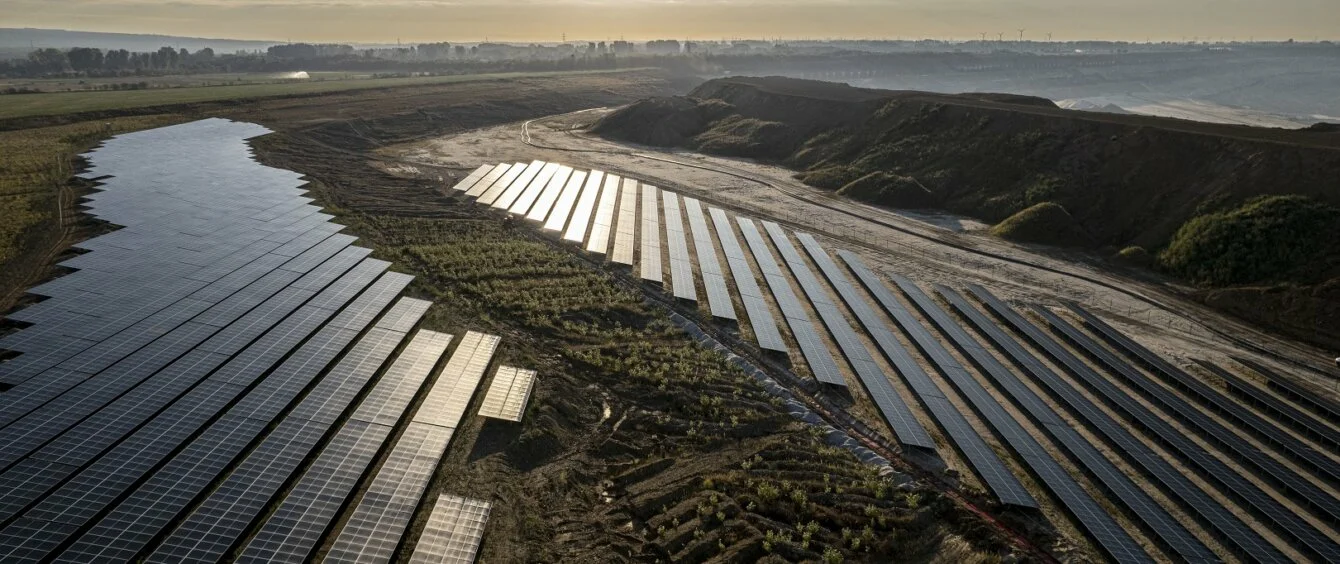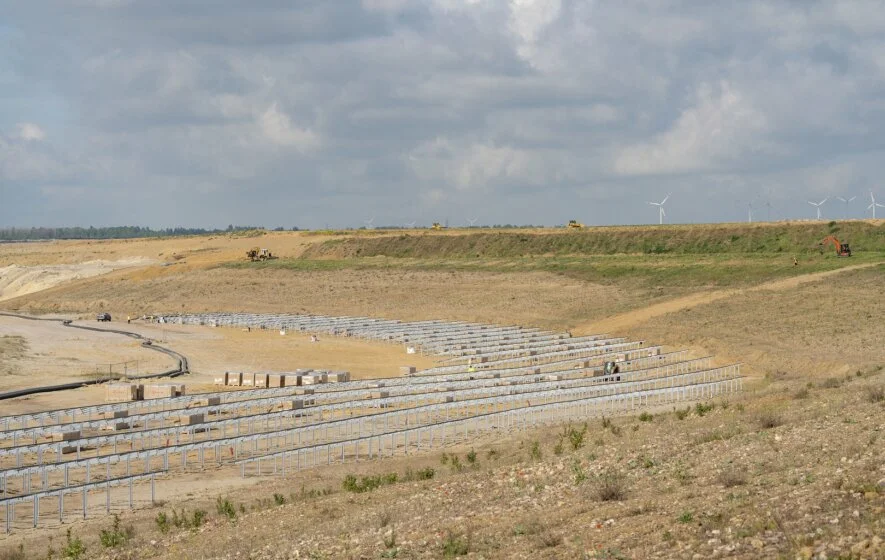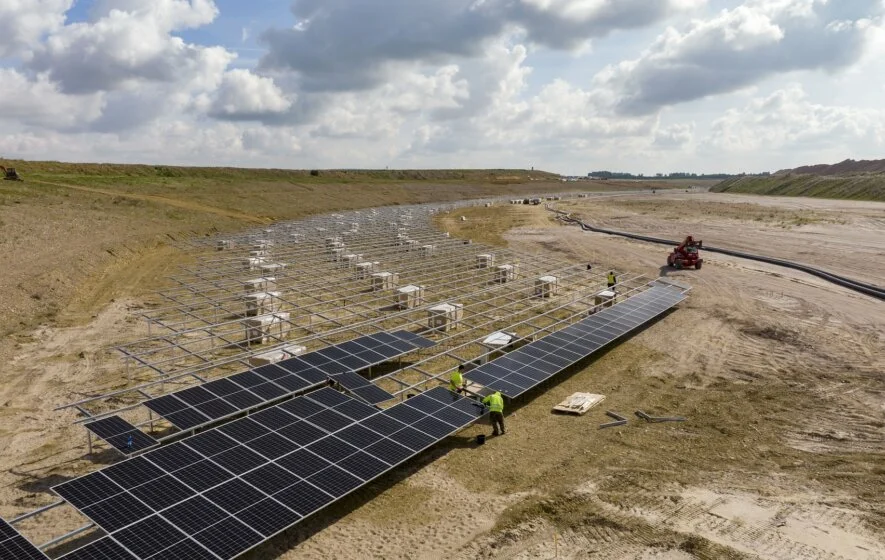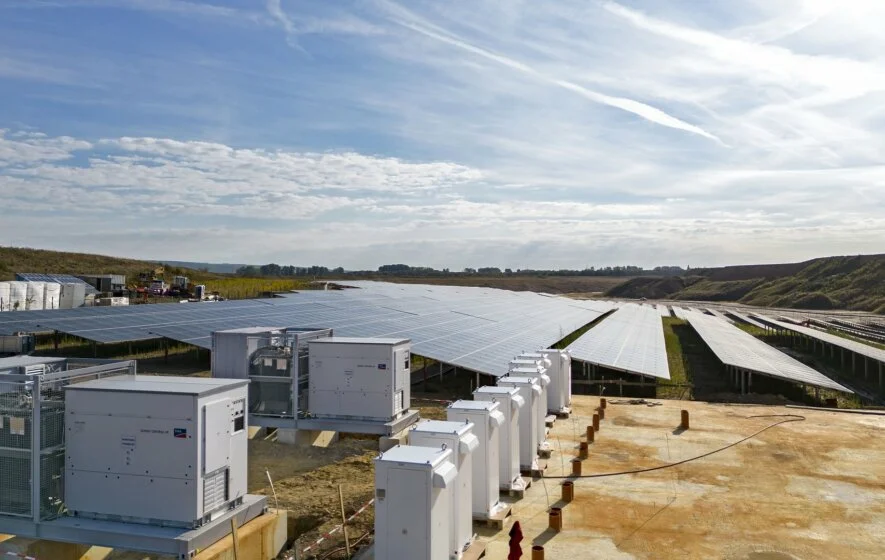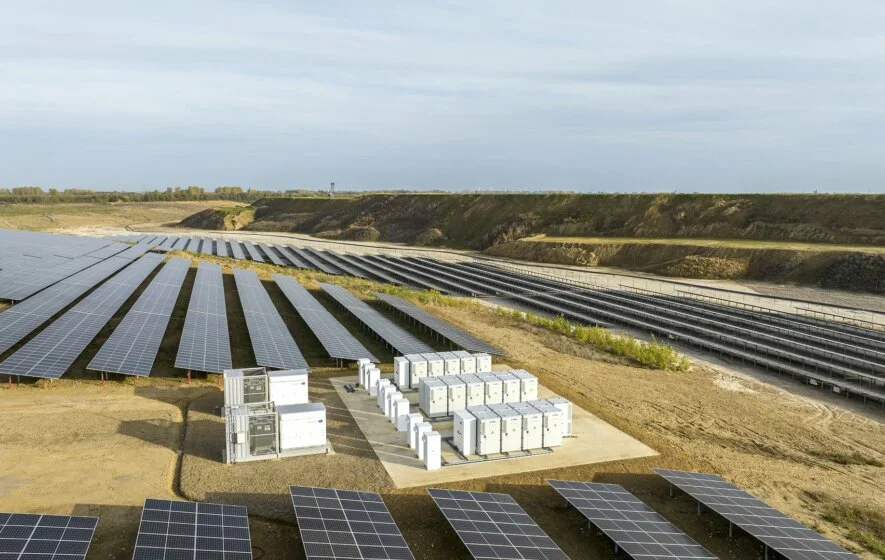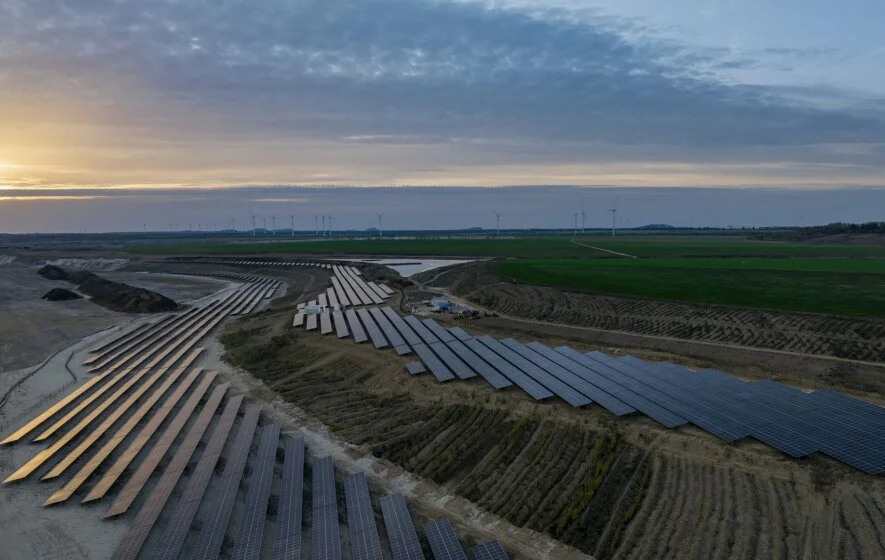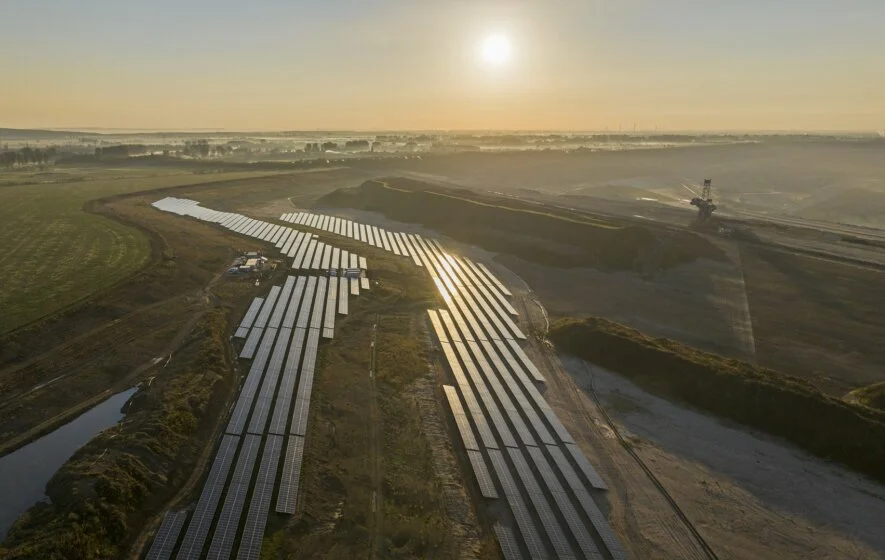
- Working in photovoltaics for this last 10+ years
A site that, not too long ago, was strewn with lignite excavators, is now home to an innovative solar farm. RWE has commissioned a ground-mounted solar project with a capacity of 14.4 megawatts (MW) at the Inden mine in the Rhenish lignite-mining region. The ‘RWE indeland Solar Farm‘ is connected to a battery – the first of its kind, according to the company. But it doesn’t stop there: the project is also a great example of a sustainable interim utilisation strategy for opencast mining sites.
Now we have solar modules, but once the lignite mining operations have been completed, it will be a lake. In the meantime, we can put the empty plot to good use with PV systems.” Christian Meisen, Project Manager PV Germany at RWE Renewables
26,500 solar modules built in record time
The project, which had the backing of the German Network Agency, was delivered in record time. The planning application was submitted in 2021, and it only took little more than a year before the 26,500 solar modules were commissioned. “The collaboration with RWE itself and the District of Düren was really straightforward, which meant we could get on with things quite quickly,” says Meisen.
Since the symbolic ground-breaking ceremony in early 2022, solar modules, inverter stations and battery modules have been built on two approximately 1.4 km-long and 100 m-wide gravel strips on the western border of the Inden opencast mine. The plant went online in December 2022.
The PV system is connected to an innovative battery storage system
The battery storage unit is what sets the project apart. It can store up to 9.6 megawatt hours of electricity, enabling it to help cushion generation peaks: “The storage system is designed to store and output electricity over two hour periods. This is ideal during favourable weather conditions when more electricity is generated than can be consumed – for example at lunchtime,” says the project manager.
RWE is in the process of planning, building and operating various battery storage systems, some of which are particularly innovative. At the RWE pumped storage power plant in Herdecke, for example, a battery storage system went online in 2021 that was made from used EV batteries, referred to as ‘second life batteries’ (as reported by en:former). At the Lingen and Werne sites, RWE is building its “Megabattery 117+” energy storage project, which will be connected via virtual coupling. Follow the link for more information.
Hybrid plant to produce power until the site is recultivated
Once the coal mining operations have been completed, the site will undergo extensive recultivation, during which RWE will recreate the original landscape and build new habitats. “When the Inden opencast mine closes at the end of 2029, the solar modules will be stationed on the edge of a lake. In 17 to 18 years, the south side of the RWE indeland Solar Farm will need to be dismantled, as the water expands. Later, the entire site will be underwater,” explains Christian Meisen.
The solar farm is a good interim option. The project will pay its way after as little as two decades, according to the expert. Ground-mounted solar arrays usually have a service life of around 30 years, while most battery storage systems last a maximum of 20 years. The plant is therefore a flagship project for the company, not only for the energy transition, but also for the structural change in the Rhenish mining area. By 2030, RWE wants to build at least 500 megawatts of renewable capacity in the Rhenish lignite mining region alone.
